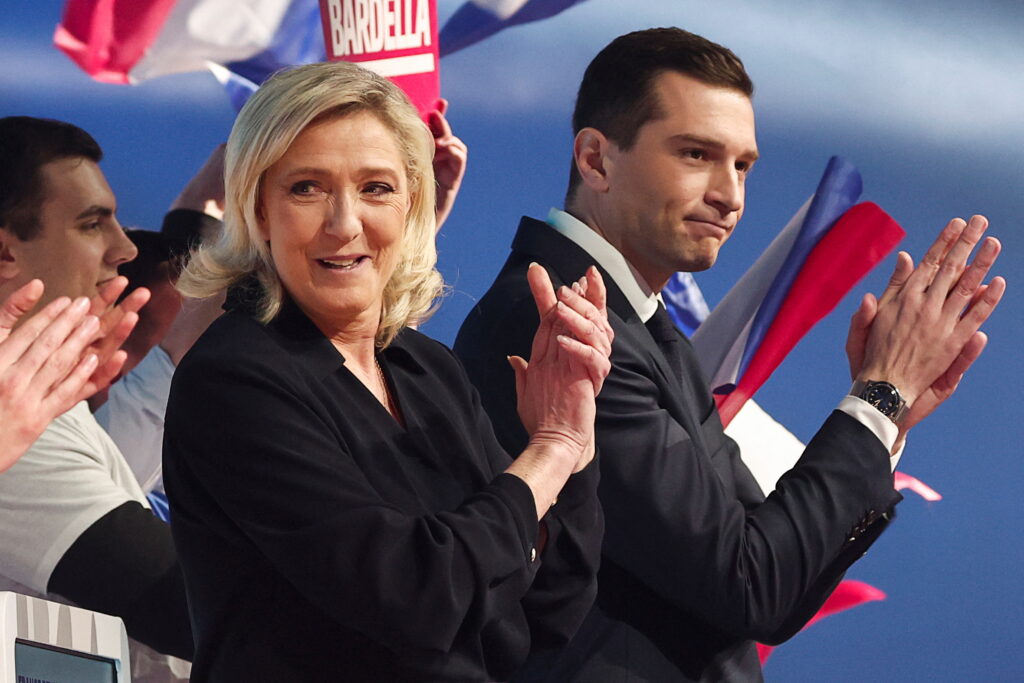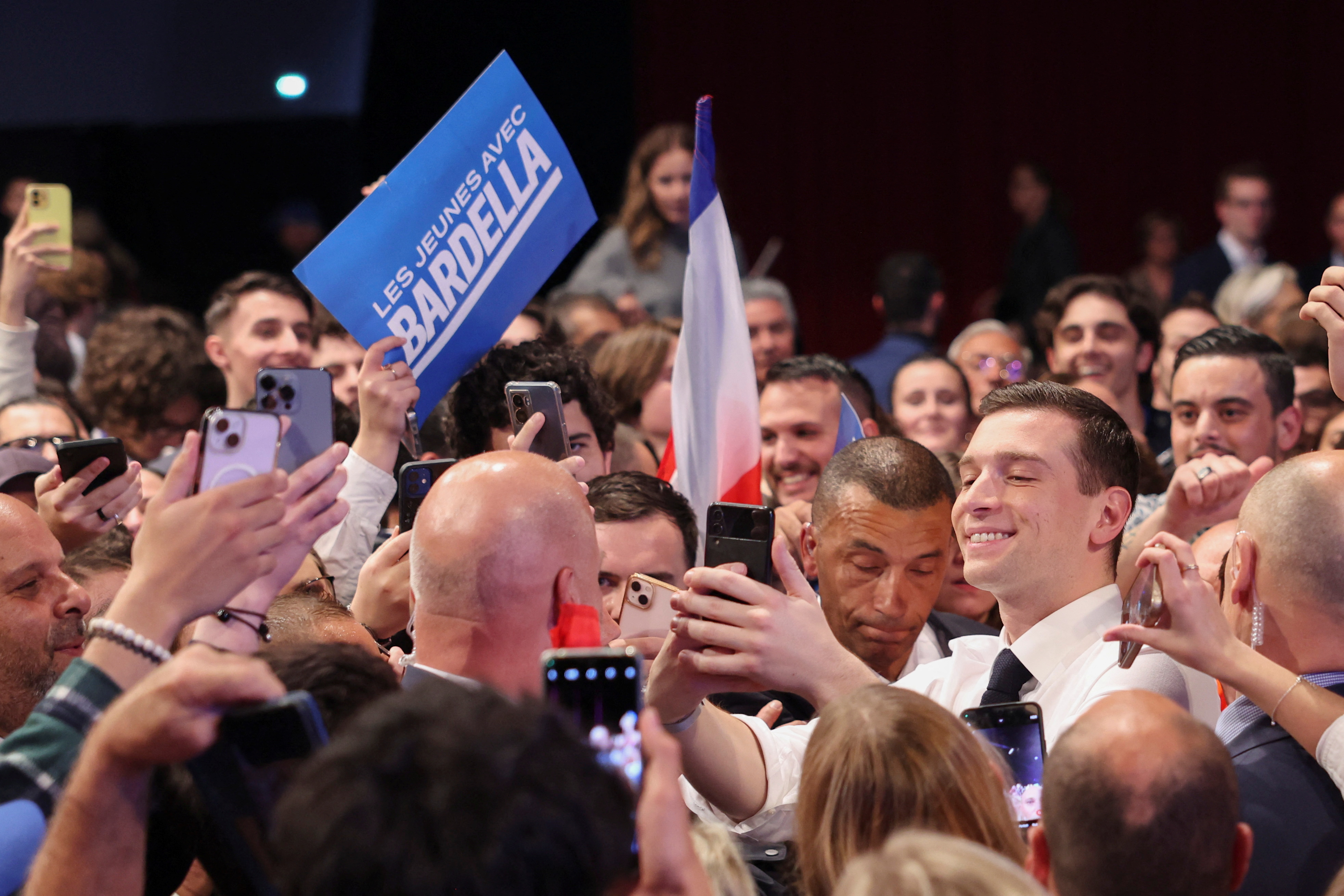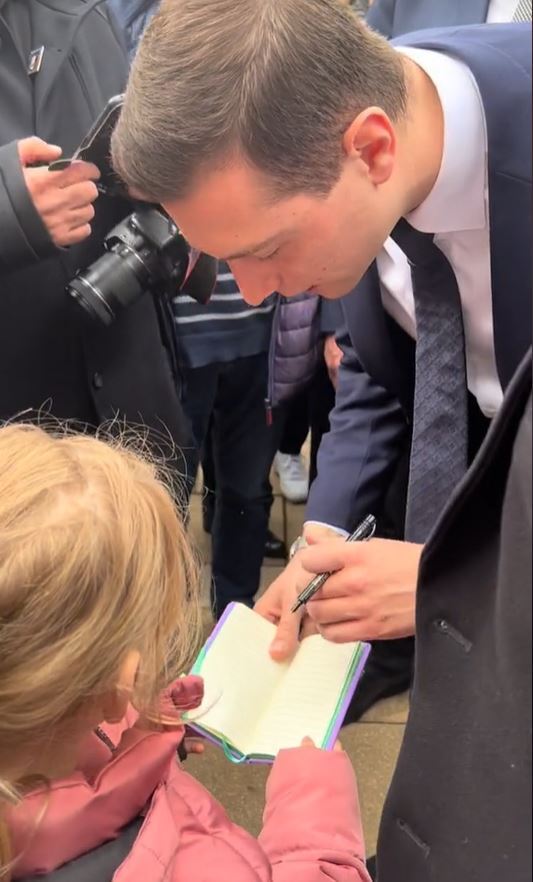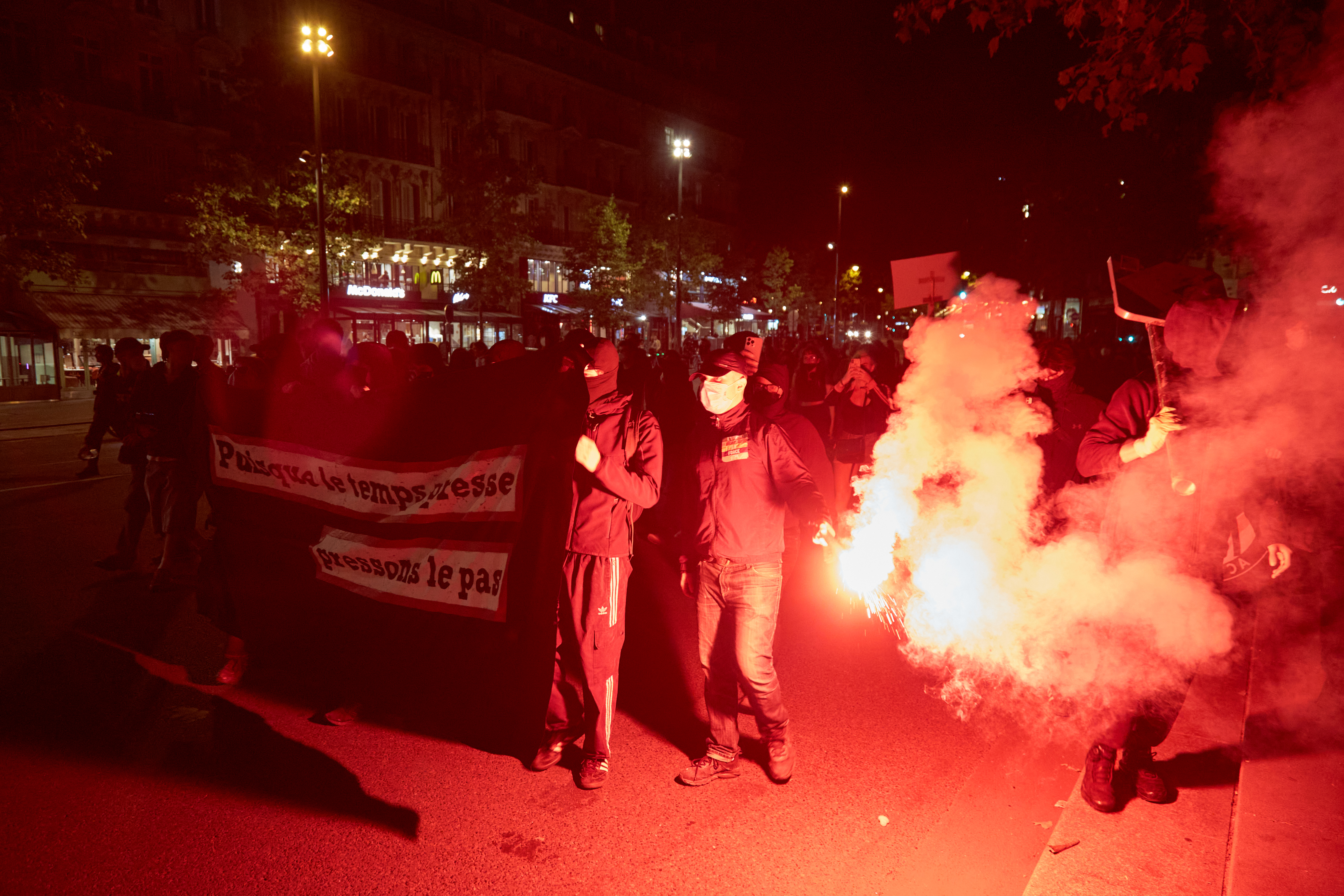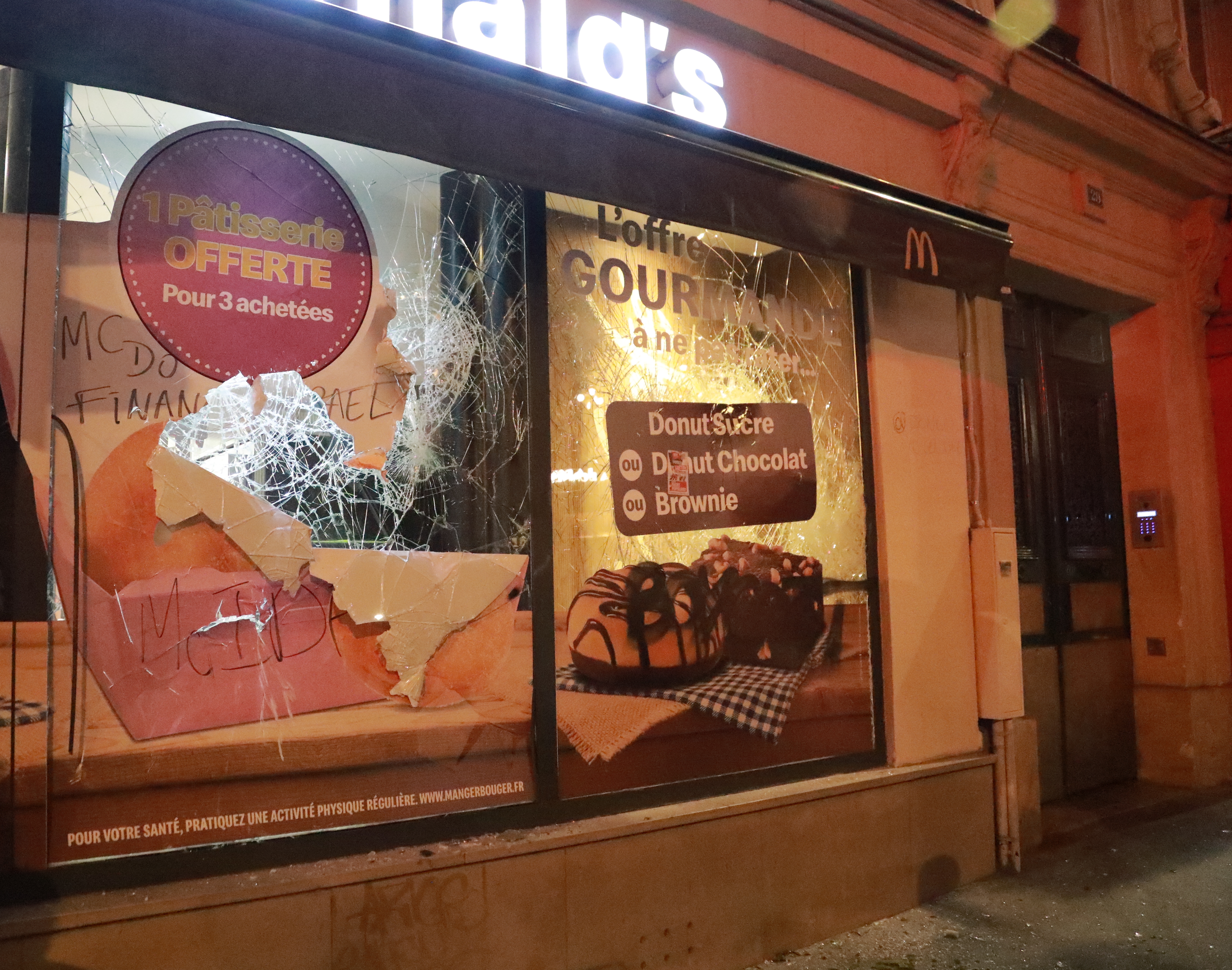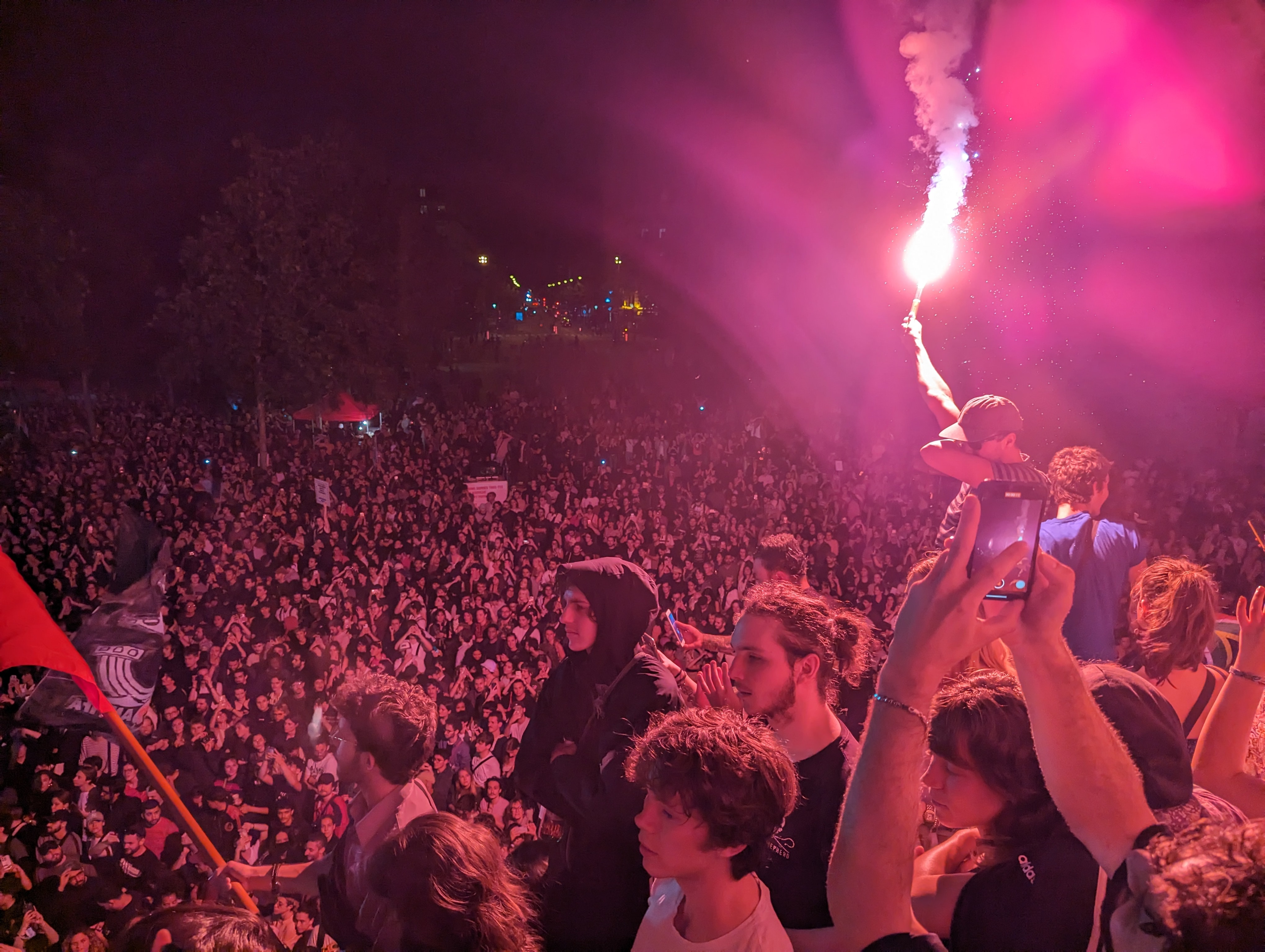A YOUNG TikTok whizz, Jordan Bardella, is looking increasingly likely to become France’s next prime minister.
With boyish good looks, selfie-requesting fans and behind-the-scenes TikTok videos, 28-year-old Bardella is dominating his competition in the polls.
The young politician has harnessed social media to garner Gen Z support for the far-right National Rally (RN) party led by Marine Le Pen.
Dubbed “the lion’s cub” by Le Pen herself, he is set to be France’s youngest ever prime minister if his party wins the ongoing election.
French President Emmanuel Macron declared a snap election in May, taking a gamble which looks to be failing after RN scored a sweeping win in yesterday’s polls.
Le Pen gloated that Macron’s alliance was “almost wiped out” during the first of the two rounds – with the second only a week away.
Last night’s win for France‘s right saw riots and protests break out around the country and protestors flooded the streets and fought with cops.
The current French pm Gabriel Attal is only 34, but Bardella would be younger by six years if he were to take over after the elections this summer.
After last night’s disastrous results for Macron, Attal said the far right sit at the “gates of power“.
Born to an Italian immigrant mum and a businessman who split when he was one, Bardella joined the party aged just 16.
He soon dropped out of uni to pursue his career in politics and now has 1.5 million followers on TikTok where he promotes the party.
Using smooth graphics, popular french music and high res videos of him earnestly addressing the camera, he has taken advantage of the Gen Z platform more effectively than his elders likely could.
Two days ago he posted one of the heart-to-heart videos from behind a desk with a French flag in the background.
With the top button of his shirt undone enough to give a young-and-relaxed-politician feel, he urged people to vote.
The caption read: “Nothing can stop a people who have started to hope again.
“Have faith in France, be free, be passionately French: this Sunday, June 30, mobilize, vote for the candidates of the National Rally.
“I count on you. We are ready.”
The 28-year-old also shares videos of him signing autographs and taking pictures with fans, as well as swaggering behind-the-scenes shots from political debates.
He is often flagged down at RN events and asked to take selfies.
Bardella most likely TikTok to help engender the younger vote in France for right-wing policies, historically a harder get.
He was originally made party leader in 2022 so Le Pen could focus on her bid for the presidency.
Dr Itay Lotem, lecturer in French studies at the University of Westminster, told Sky she saw him as “a young, fresh face that she could control”.
His technique for bringing in the younger vote on platforms like TikTok could be part of the reason RN swept to much support up on Sunday.
His party secured 33 per cent of the vote, while the left-wing New Popular Front came in second with 28 per cent.
Macron’s centrist bloc trailed behind with just 20 per cent, the interior ministry said.
The RN is aiming for an absolute majority – but the next round could lead to a hung parliament.
Worried French leaders will be hoping for the formation of the so-called “Republican Front” to block the National Rally party from doing so.
But polling has raised questions about whether discontented voters will be willing to mobilise against them.
Macron has called on the French public to rally round “clearly republican and democratic” candidates.
France has not been under far-right leadership since World War Two when Philippe Pétain and his prime minister Pierre Laval headed the Vichy regime that collaborated with the Nazis.
At least 289 seats, out of 577, are needed for an absolute majority in the National Assembly, France’s lower house of parliament.
Le Pen addressed cheering supporters in her northern constituency of Henin-Beaumont last night.
She said: “Democracy has spoken and the French have put the RN and its allies at the top, practically wiping out the Macron camp.”
How do French elections work?
By Ellie Doughty
THE French public choose their president and MPs in separate elections – unlike in the UK where the country’s leader, the PM, is determined by which party has a majority in parliament.
There are 577 seats – and constituencies – in France’s National Assembly.
For an absolute majority in government a party would need 289 seats.
France’s parliamentary elections are made up of two rounds, with the first kicking out anyone who fails to win 12.5% of votes in their area.
If any candidates get more than 50% of the vote in their area, and at least a quarter of the local voter pool turns out to cast their ballot, they win a seat automatically.
This doesn’t happen very often, but RN thinks this time it could happen in dozens of seats.
The second round, for any seats which candidates do not win outright, is then a series of knock-outs fought either by two, three or sometimes four candidates.
Some candidates may drop out before the second round on July 7 to give their allies a better chance over another candidate in a three or four-way race.
French leaders are urging candidates and voters to act tactically to stop the far-right surge.
But polling shows voters may be unwilling to vote tactically and to form the so-called “Republican Front” – a united movement to block for the National Rally.
A poll by Odoxa found that only 41 per cent of voters were willing to vote to block the RN – while some 47 per cent would vote to stop NFP or some 44 per cent to stop Together.

